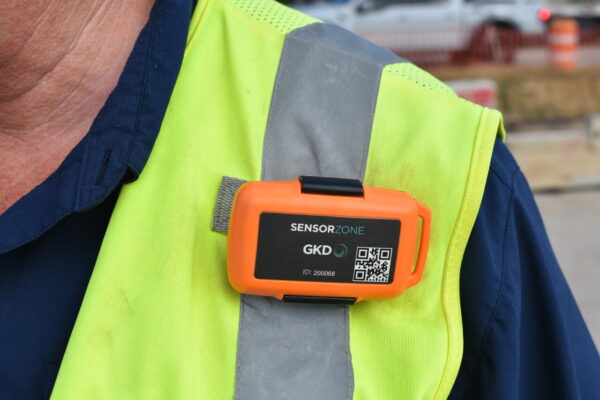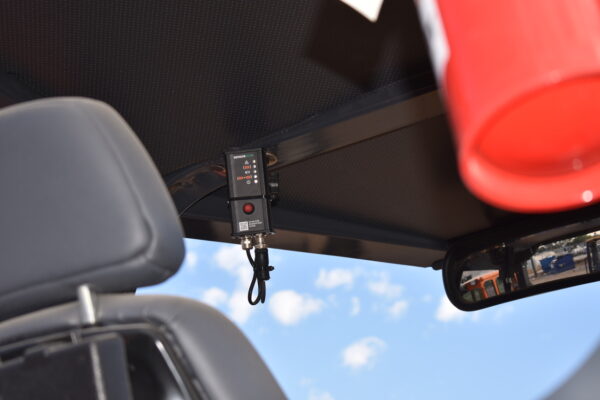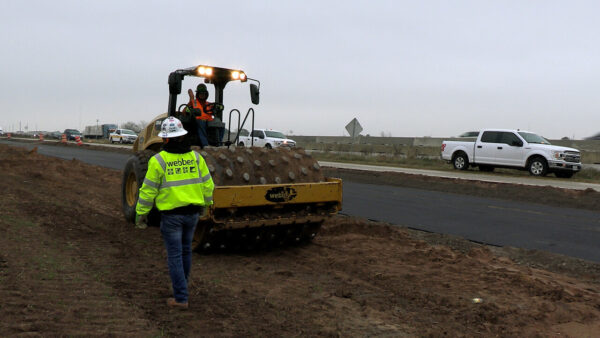
Wearable Technology: Enhancing Safety and Reducing Risk on Construction Sites
25 of July of 2023
Construction sites are often dynamic environments with various hazards and risks. Worker safety is of utmost importance, and technological advancements continue to play a crucial role in minimizing these risks. As a regional safety manager at Webber, a subsidiary of Ferrovial, I have had the privilege of being involved in an exciting initiative known as SensorZone-Webber Proximity Initiative aimed at improving safety conditions for our employees and users of our infrastructure.
This groundbreaking project utilizes proximity sensors integrated into wearable devices to enhance safety protocols and prevent accidents. I’m excited to share my first-hand experience with this innovative proximity warning system and its profound impact on workplace safety.
The Proximity Warning System: Triple Alert for Safety
Traditionally, hazard detection relied on manual observations and inspections by site workers and safety personnel. At Webber, however, we have embraced wearable technology to revolutionize this process. By equipping workers with smart wearables, such as sensors embedded in helmets and vests, we have enabled real-time monitoring of potentially dangerous interactions between personnel and heavy machinery. The SensorZone proximity warning system has emerged as a game-changer in our quest for enhanced safety measures.

The core principle of the proximity warning system lies in its ability to detect hazardous situations and promptly trigger a triple alert system. Wearable devices such as vests, helmets, and other equipment, are equipped with proximity sensors that establish a connection with the machinery operating on-site. Whenever the system detects a potential risk or accidental interaction between personnel and heavy machinery, it initiates a three-tiered alert mechanism consisting of physical, visual, and acoustic warnings.

The physical alert could be a mild vibration in the wearable device, serving as an immediate physical reminder to the worker. Simultaneously, visual indicators, such as LED lights or display screens, illuminate to draw attention to the impending danger. To ensure maximum effectiveness, an audible alarm complements the physical and visual cues, providing an additional layer of warning for the worker to react promptly and avert potential accidents.

Collaboration & Expansion
The initial trial of the proximity warning system was conducted in the United States. The results were nothing short of remarkable, validating the efficacy of this revolutionary safety technology. Encouraged by the success of the trial, pilot projects were subsequently implemented on two significant Ferrovial infrastructure ventures: the Club del Mar expansion project in Palma de Mallorca, Spain, and the Oporto Metro extension in Portugal.
To bring this system to fruition, Ferrovial collaborated with SensorZone a well-known provider of cutting-edge devices. The expertise and reliability of SensorZone were instrumental in ensuring the seamless integration of proximity sensors into our wearable safety equipment. By leveraging SensorZone’s technological expertise, we have been able to enhance the safety of our workers and infrastructure users, achieving unprecedented control over potential accidents.
Data-driven Insights and Continuous Improvement
The implementation of wearable technology generates a vast amount of data, providing us with valuable insights into safety performance and site conditions. By analyzing this data, we can identify trends, patterns, and potential areas for improvement. For example, if certain areas of a construction site consistently exhibit higher risk levels, proactive measures can be taken to mitigate these risks.
By integrating wearable technology into our everyday work at construction sites, we have marked a significant step forward in enhancing safety and reducing risk. By leveraging smart wearables, our hope is to transform hazard detection, enable real-time monitoring, and foster a culture of safety and accountability. The data collected from wearable devices empowers us to make data-driven decisions, identify areas for improvement, and continuously enhance safety practices. Although we are the first in the United States to use such devices, our hope is that other construction companies embrace wearable technology as well. The industry as a whole will benefit from improved worker safety, increased efficiency, and reduced risk on construction sites.





There are no comments yet